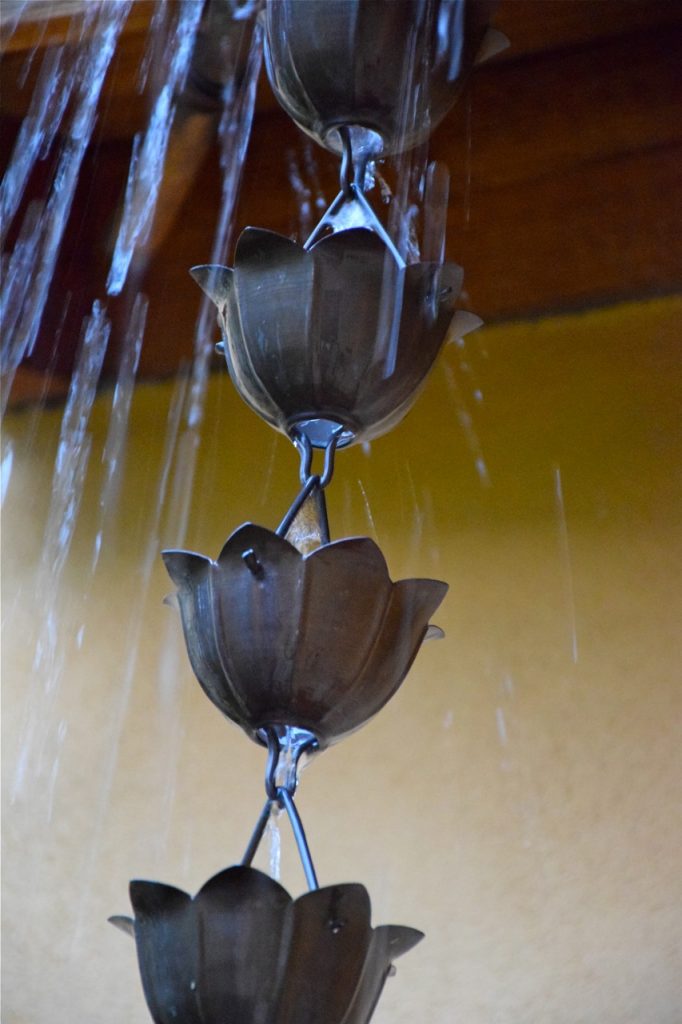Water harvesting is the capture and storage of rainfall to irrigate plants or to supply people and animals. It is one of the oldest known gardening methods.
Water harvesting dates back to the beginning of agriculture. In the desert southwest, Tohono O’odham, and Hopi tribes still harvest rainwater after the onset of summer and winter rain. Did you ever play in rainwater as a child, building earth dikes and letting them go? This is what water harvesting is all about.
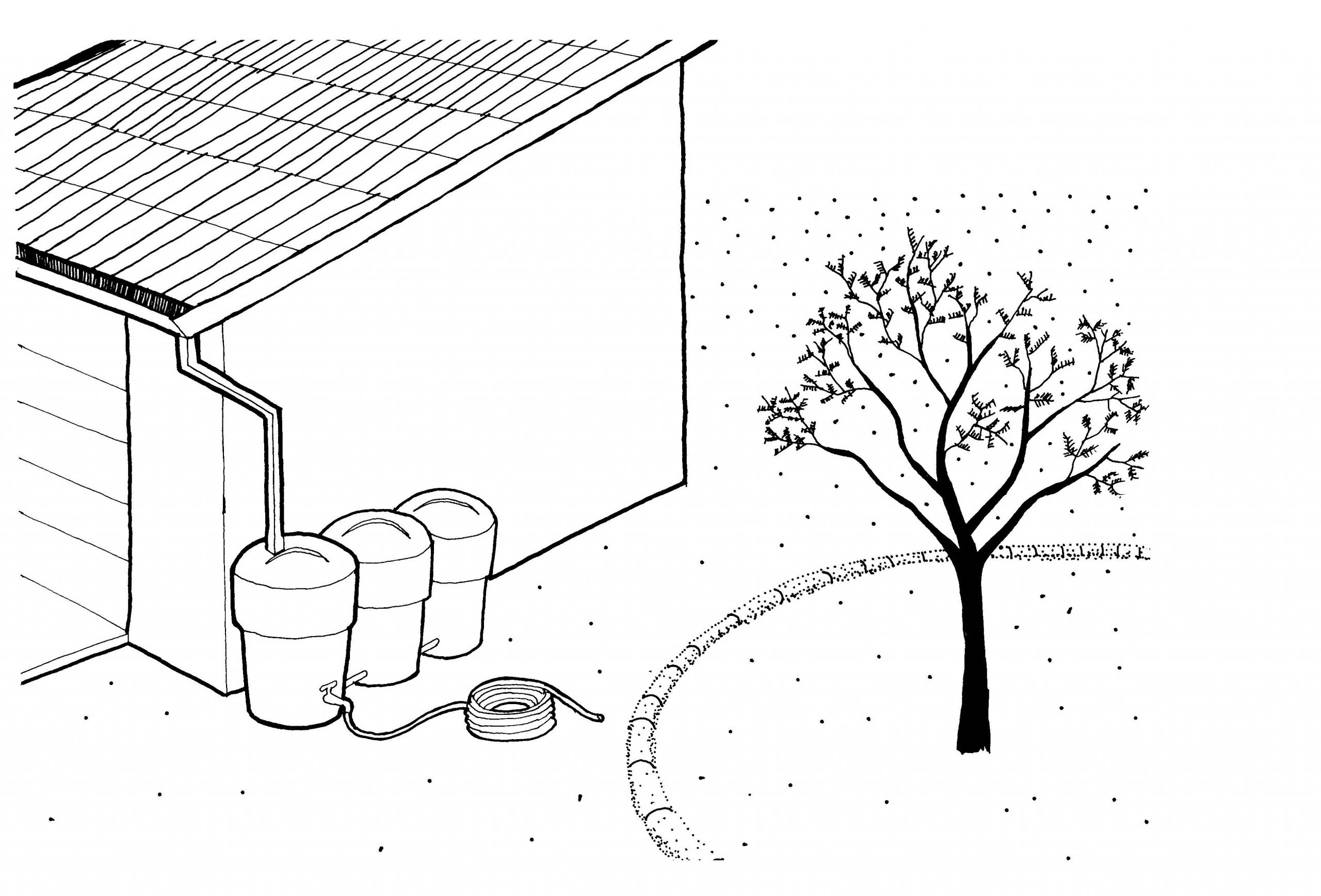
Water harvesting will save you money on your water bills and reduce your dependence on tapwater. A well-designed water harvesting system will also decrease your irrigation needs.

All you need for a water harvesting system is rain and a place to put it. A simple system is devised by contouring and shaping land areas so water will flow directly to vegetation. A more sophisticated system features storage to capture water for later use.
A “catchment” is any large surface, such as a roof, patio or driveway, that can capture and/or carry water to where it can be used immediately or stored. Where are your catchment surfaces? Everybody has at least one catchment on their property.
You can direct water runoff from catchment surfaces to plants, trees or lawns with dikes, berms, or by contouring. If you are storing rainwater, rain gutters or pipes can direct flow to the containers. You can then use this stored water as an alternative watering source during sparse rain periods.
Planning Your Water Harvesting System
A site plan, drawn to scale, will be helpful in planning your water harvesting system. The plan should identify all buildings, sidewalks, and other catchments that will carry water. Sketch in arrows to indicate water flow directions across each surface.
Designate landscaped areas, types of vegetation and number of plants. This plan will help you decide where and
how to direct rainwater, or where to store water should you decide storage is possible.
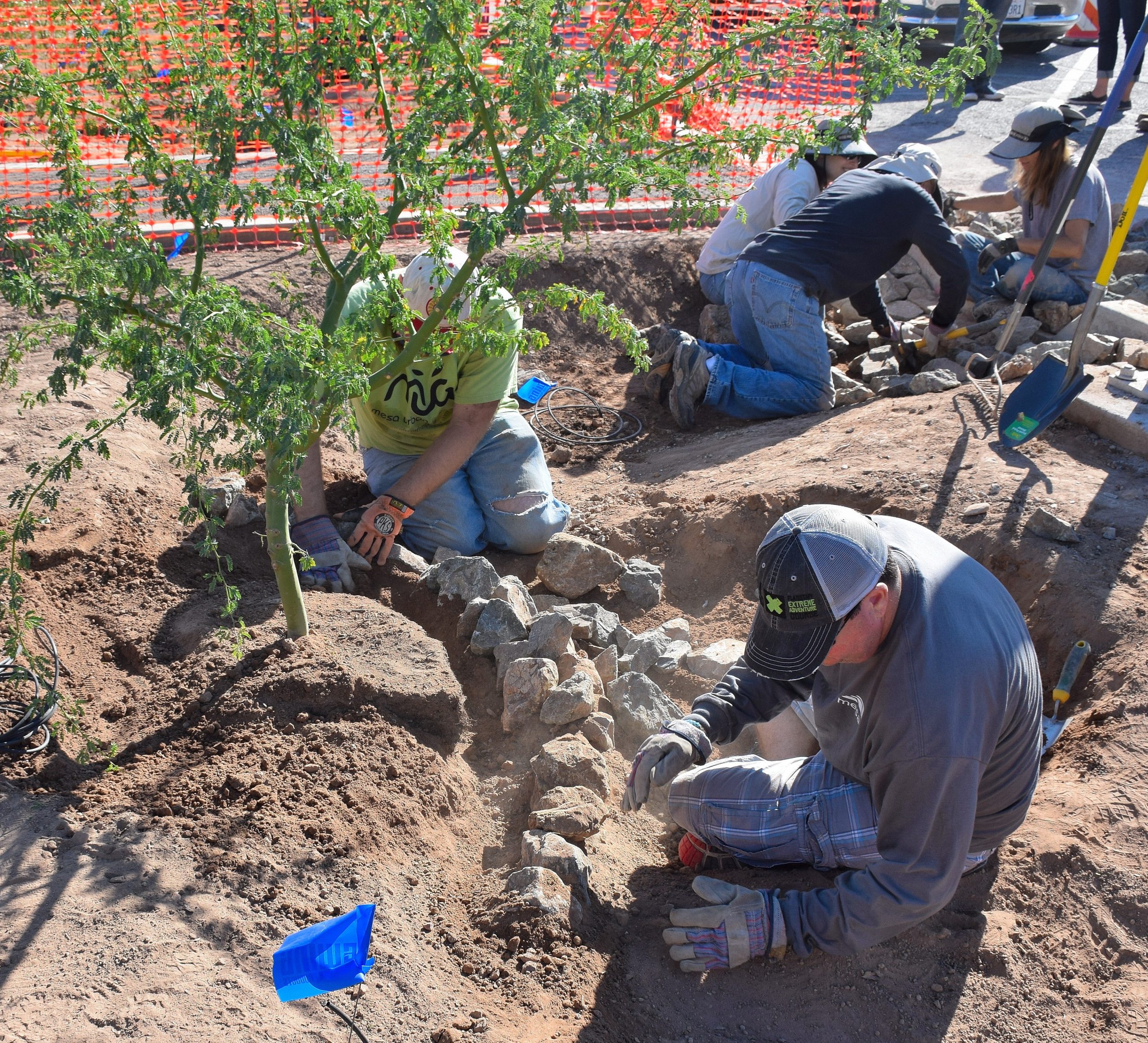
Preparing the Site
You can do many things to capture rainfall at your site:
- Create depressions around trees and line them with rock mulch to retain moisture.
- Dig furrows and channels to direct water to a garden.
- If you’re designing a new home site for water harvesting, slope your paving to direct water to plants.
- Take advantage of roof water by installing gutters and downspouts if you don’t already have them.
Should I Store Rainwater?
Having a water surplus available at the right time of year makes storage well worth the time and effort. A surplus becomes impractical when it must be stored for more than several months. Water stored for long periods of time will stagnate and become a health hazard. To determine whether storage can, or should be a part of your harvesting system, compare your total amount of water available (estimating rainfall) in a given month to that month’s total landscape requirements. If you have a surplus that can be used in a reasonable amount of time, you should consider a storage system.
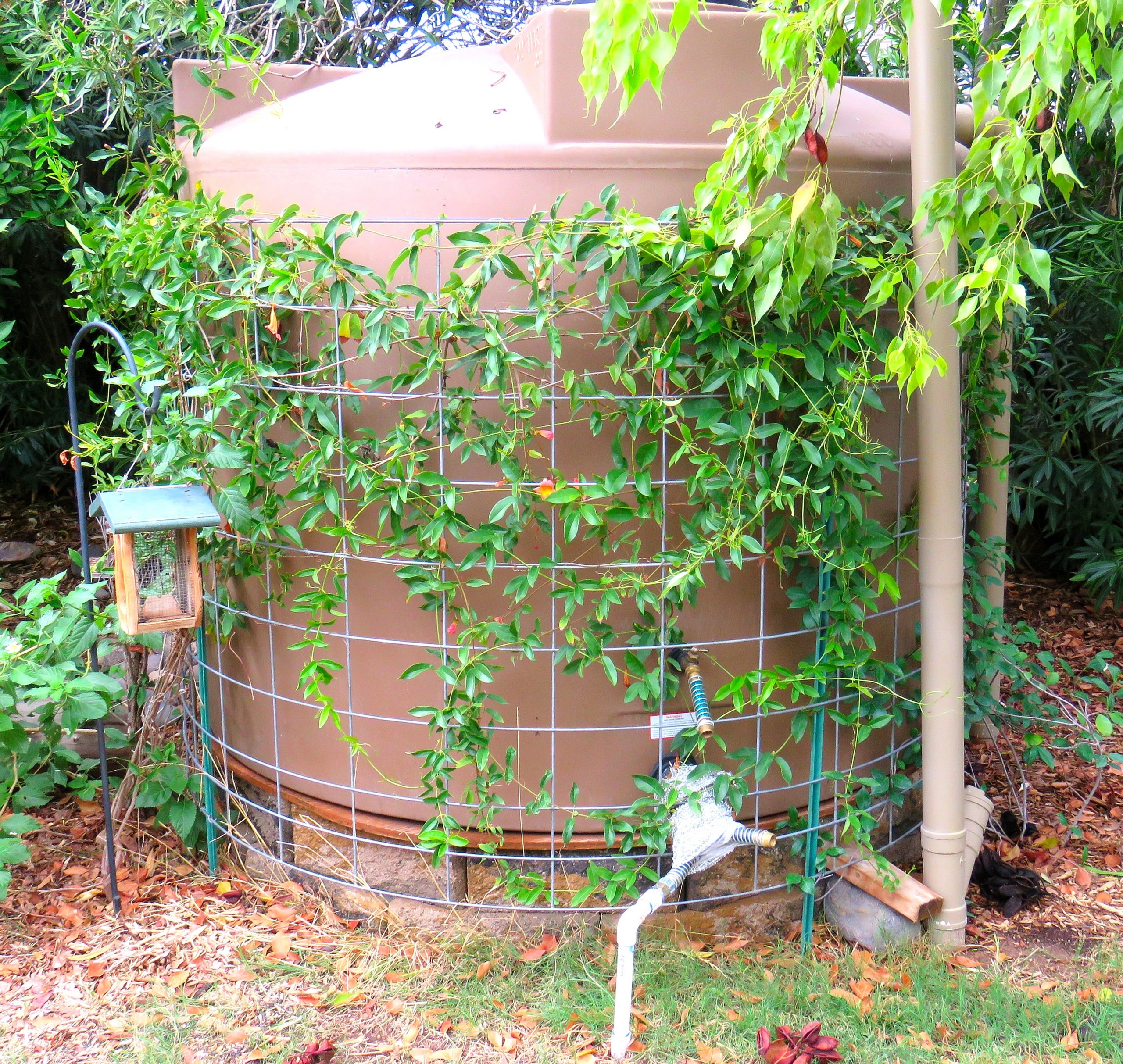
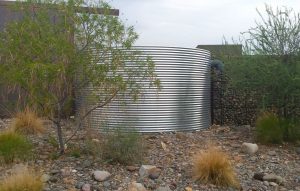
Types of Water Storage
You can store water in a variety of ways: 55-gallon steel drums, oak barrels or underground storage tanks. For a simple storage system, place an oil drum or barrel on a raised platform under a rain gutter downspout. The barrel should have an external pipe with a shutoff valve to control the amount of water withdrawn. If you have designed your system properly, gravity will enable you to move water from the barrel to a drip irrigation system without a pump.
System Maintenance
Regular maintenance is critical to any dependable water harvesting system. Make sure your gutters and downspouts are free of debris. Periodically clean and/or repair dikes, berms and channels to prevent excessive erosion.
With a little planning, you can make your own urban water harvesting system for landscape use and lower your water bill.
Finally, it is a good idea to check the laws related to capturing rainwater within your state or local municipality.
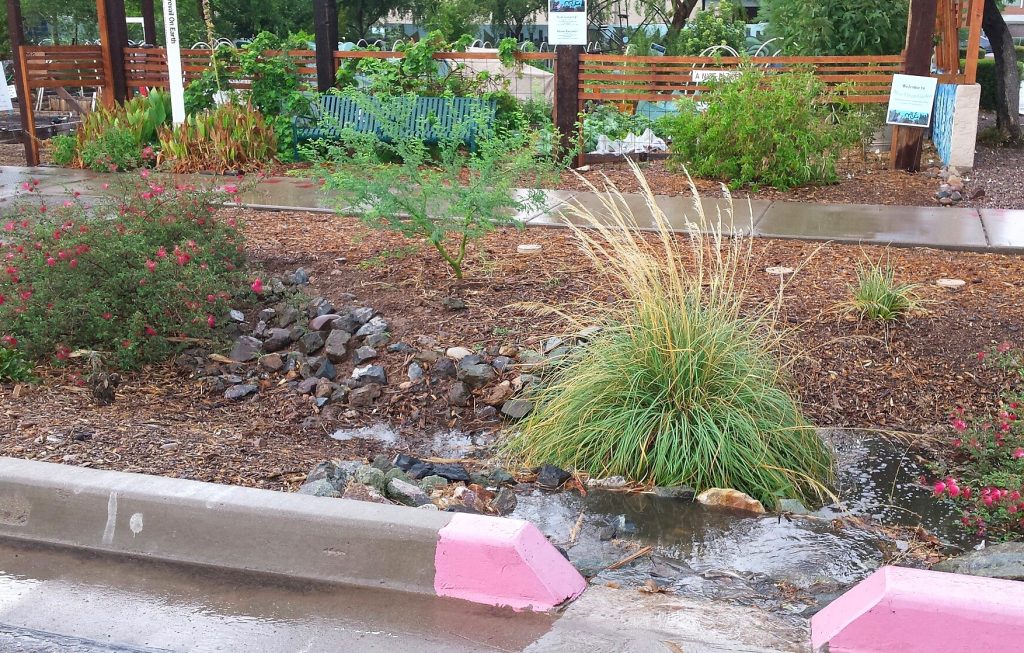
NOTE: Learn more on Water – Use It Wisely’s Rainwater Harvesting page.
This article is being reprinted with permission. You can view the original brochure here titled “Harvesting Rainwater for Landscape Use.”


